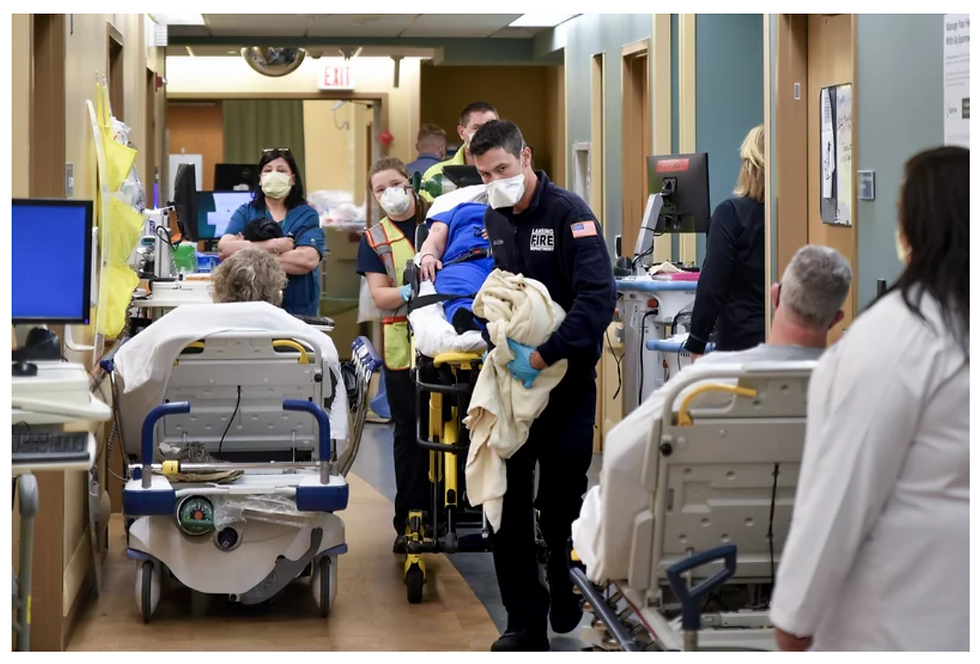What’s your Strategy for Marketing Your Wound Program to Key Referral Partners?
- katherinepiette
- Oct 5, 2019
- 3 min read
Updated: Sep 21, 2020
Given that home health patients with wounds are in the clinical grouping with the highest potential reimbursement (estimated 30-day reimbursement is expected to be about $2,100), there is a significant opportunity to start looking at wound referrals in a different way, assuming the agency has the clinical and operational infrastructure to ensure excellent clinical and financial outcomes.
Agencies can strengthen this referral partnership by reporting the 30-day readmission data back to the hospital to demonstrate the efficacy of the agency’s Wound Program of Excellence. This type of partnership also solidifies the relationship with the hospital for the coming reality of bundled post-acute payments, which are currently being studied by the Centers for Medicare and Medicaid (CMS) as a reimbursement model for home health agencies and other post-acute providers.
Under PDGM (Patient-Driven Groupings Model) , the case-mix (and therefore revenue) for Institutional referrals (defined as a patient who is discharged from an institutional setting – hospital, SNF, IRF, LTCH in the 14 days prior to the home health admission) is significantly higher than for referrals from the Community setting (no institutional discharge 14 days before the agency admission). This creates significant opportunities for agencies to align their marketing efforts to those institutional providers who are partnering with high quality agencies to care for their complex wound patients post-discharge.
A thorough understanding of both geographical market data and agency-specific data will empower agencies to drive strategies to ensure their viability and success. We recommend that home health agencies:
Profile the ideal patient referral by analyzing the origin of the referral and how the referral impacts the agency’s reimbursement.
Identify who is referring your wound patients to the agency? Is it a hospital, a skilled nursing facility, a wound care center or a community physician? If the data points to a higher percentage of community referrals, then it is time to consider developing a program to partner with hospitals for wound patient referrals.
Define goals around PDGM referral targets and identify those referral sources that can help an agency to reach those goals. Armed with this data, an agency’s marketing and sales teams should begin incorporating this into their initiatives now – in advance of the 2020 PDGM implementation.
Utilize wound imaging technology to establish a baseline assessment of the wound and then, subsequently, to document the progression of the wound. Accurate closure rates substantiated by progressive wound photos, as well as other key wound outcomes metrics, are critical to demonstrating an agency’s value to potential wound patient referral sources.
Provide objective healing and outcomes data that are critical in effective marketing to referral sources for their complex wound patients. Agencies must have a dashboard to measure their Key Performance Indicators for wound patients, not only their clinical healing outcomes but also their internal return on investment for marketing and sales efforts to increase wound care patient referral sources.
Wound management is complicated and requires extensive expertise to manage this patient population and produce the best clinical and financial outcomes. It needs to be managed as a specialty with the right people, processes, technology, and systematization that ensure maximum quality, outcomes, and profitability.
Home health agency referrals generally follow the 80/20 rule, 80% of the revenue comes from the top 20% of its referral base. The top providers have diversified their base, identified their most likely targets, and have developed specific programs to deepen those relationships for greater market penetration.
If you don’t have the expertise to develop an in-house, comprehensive wound management program that drives the outcomes important to referrers, you may want to consider finding a Wound Management partner that will manage the process end-to-end, drive clinical outcomes that your patients need and your referrers demand and ensure the financial results that your organization wants to be a Wound Program of Excellence and attract greater numbers of referrals.

About Corstrata We enable Post-Acute Providers to become Wound Programs of Excellence with our Wound Maturity Benchmarking Scorecard, operational consulting, and Nurse2Nurse wound consults for the management of complex & chronic wounds for Post-Acute Providers in home health, hospice, rehab hospitals, and nursing homes.
Our senior-level, wound-certified nursing staff are some of the best and most experienced in the industry. We couple their expertise with the most advanced wound dressing technology, latest evidence-based research, and our Telehealth infrastructure to ensure that we deliver the right patient support at the greatest point of need – the bedside.
To learn more, contact Corstrata for a conversation to see how we can help make your wound management program easier and more profitable.




Comments